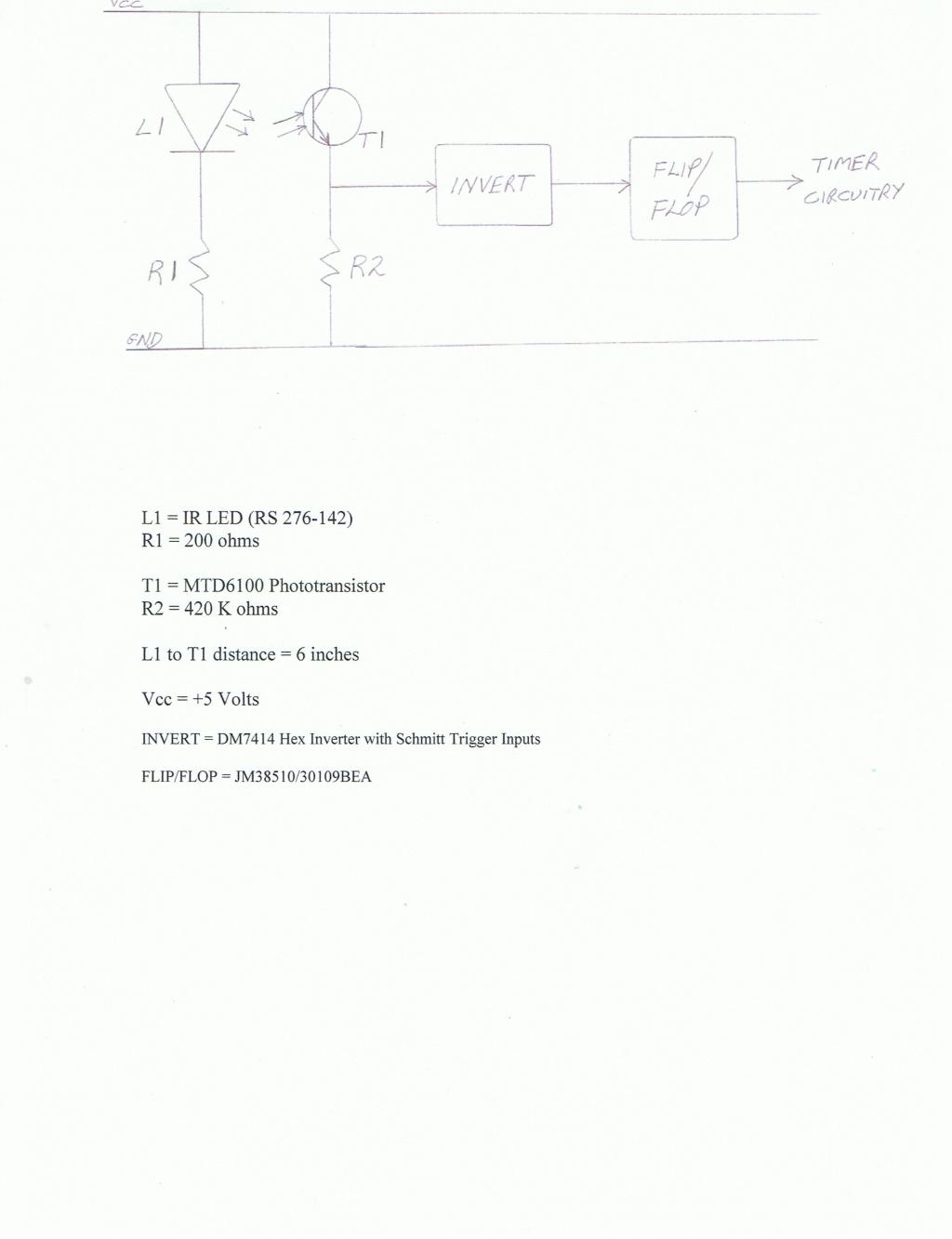IR LED Emitter/Detector Circuit
I told the Cubscouts I'd try to fix their Pinewood Derby Finish Line Timer. The part that is not working is the detection of the cars as they go by. The Timer circuitry is working okay. I've tried some different things but nothing I tried fixes the problem. The LED Emitter is working and the Detector decreases resistance when the IR LED comes on. Attached is the circuit information. I sure would appreciate some help. REZ



Comments
See if the output of the inverter is triggering the flip-flop when the beam is interrupted. A scope will help, or a logic probe.
And move the trace that goes to mcu/flipflops to be above sensor too, but below resistor.
You may not need the inverter in that case as a blocked beam will produce a 1.
Remember, for a good reason most electronics is reversed,
you supply voltage with 10k resistor and ground the trace to show a different state.
If aligning the emitter/detector does not help try reducing the value of R1 to 120 or 100 ohms. The value of R1 looks suspiciously low to me. L1 is rated for a maximum continuous forward current of 150mA. An R1 resistance of 200 ohms will limit the current to about 22mA which may be too low.
Oops, oh dear...
I think that Detector has no visible light filtering, so start in the gloom, with a short distance, and when you have that working, extend the length and ambient light, until it breaks again ...
Could you just reverse the comporaters inputs to get rid of the inverter part, I think so.